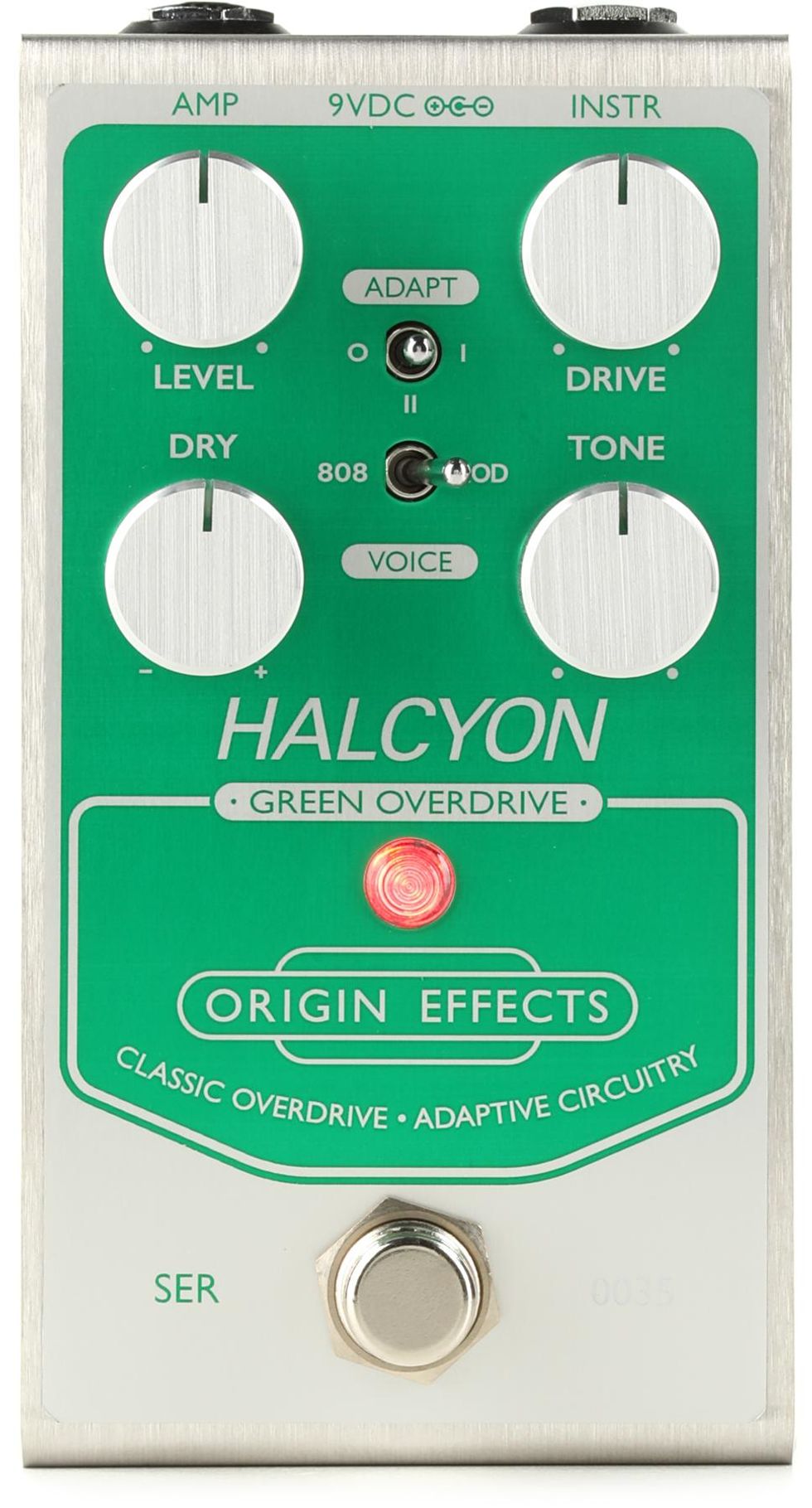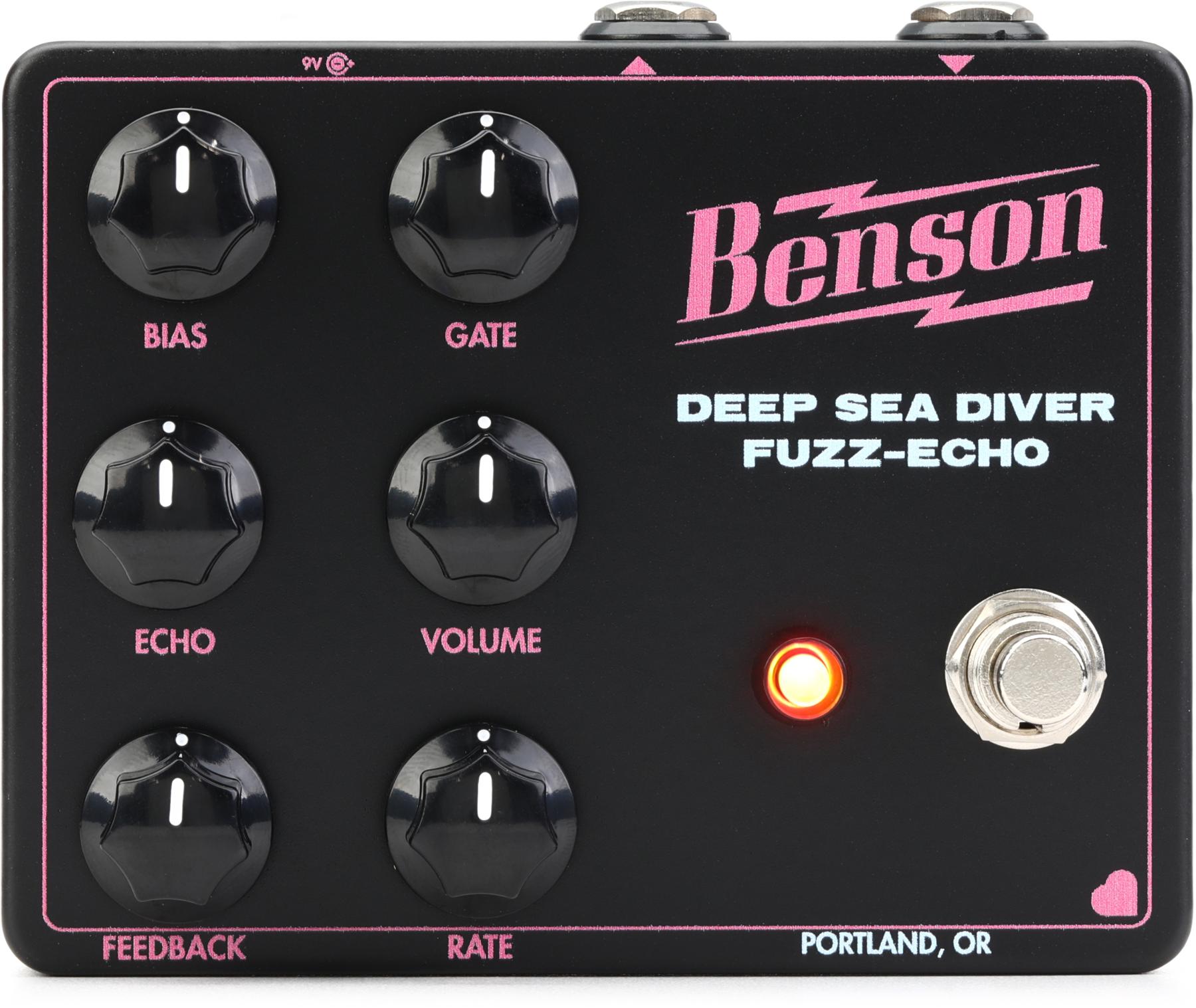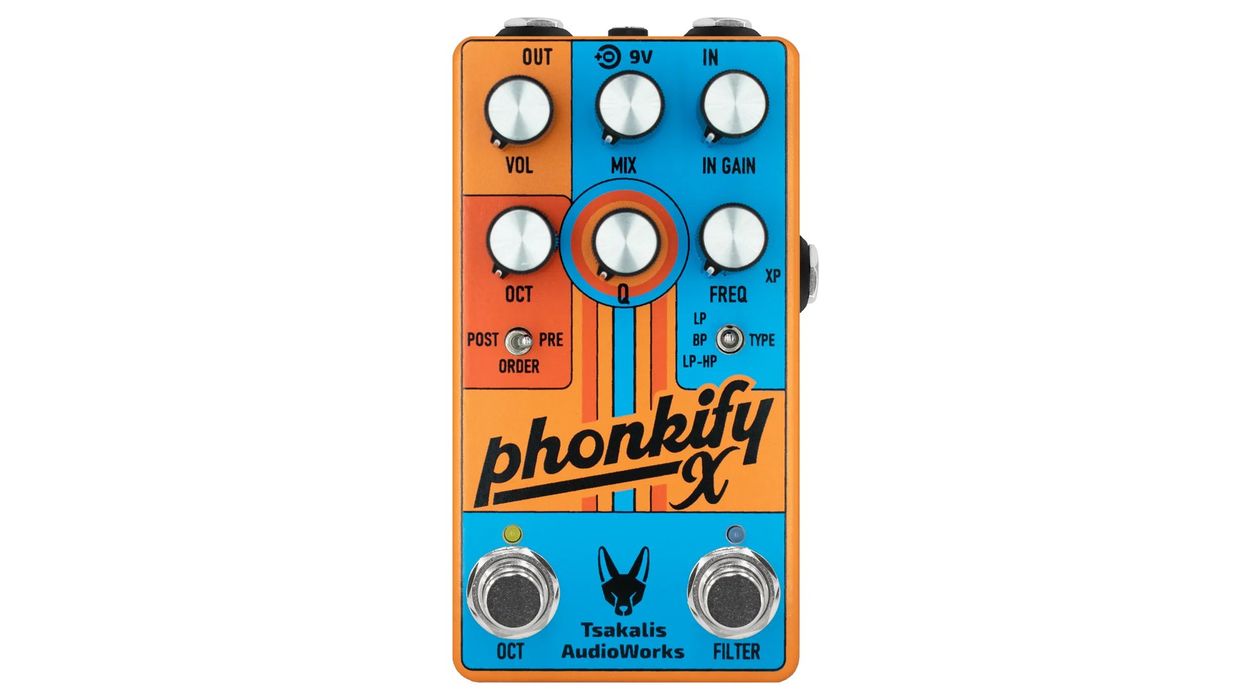Though they have steadily built an impressive and varied lineup of top-quality pedals, England’s Origin Effects is probably best known for its Cali76 series, which channeled many facets of the legendary and coveted Urei 1176 studio compressor into top-quality stompboxes and set a new standard for pedal compressors.
Origin is not afraid of new directions though. Nor, it seems, are they afraid of entering very crowded effect categories. And the Halcyon Green Overdrive reveals how meticulous, imaginative pedal design and rugged construction can make even a circuit derived from the ubiquitous Tube Screamer feel like something special.
Code Green
In pedal code, green almost always means “Tube Screamer,” or some version of it. Many makers offer their own renditions of the green meanie. And like all manufacturers that take on the task, Origin Effects had to consider all that is great about the TS808 along with its shortcomings. Origin, however, seems to have been tantalized by the possibilities.
Inevitably, some of you will cry out, “Of all the things this great company could do—another riff on the Tube Screamer!?” But hold your fire. A creative company like Origin Effects isn’t likely to put out “just another” anything. Origin promises better-than-TS dynamics, more sensitivity, improved clarity and articulation, and a more balanced frequency range. The pedal also comes with switchable voicing that tightens the output and flattens the midrange hump. Appetite whetted yet?
The Old Switcheroo
Halcyon’s controls feature the drive, tone, and level knobs you’d see on any TS. But there’s also a dry knob, so you can blend in as much bypassed signal as you like. A 2-way voice toggle delivers classic 808 or mod, which shifts the mid hump to something more like a presence boost that has distinct resonance characteristics and generates tighter lows and highs. Finally, there’s the 3-way adapt toggle, which is the revelation of Origin’s circuit. It vastly improves the circuit’s response to playing dynamics and improves clarity by reducing the midrange hump when you pick lightly or attenuate your guitar’s volume control—gradually returning to a flat frequency response as the Halcyon cleans up. The “O” position bypasses the adaptive circuit for a more traditional Screamer sound. “II” delivers the most frequency-balanced output at reduced guitar volume. Position “I” is somewhere in between.
Like other Origin Effects pedals to date, the Halcyon is built like a brushed-aluminum brick, with a heft that signals ultra-roadworthiness and pro player input. At 4.75" x 2.5" x 1.75", the enclosure is slightly more compact than many of the company’s offerings, and positioning the input, output, and 9V DC center-negative jack (external power only) on the top makes it even more pedalboard friendly. The footswitch toggles between on and buffered bypass.
Green Goddess
Initially, I approached this review thinking that I didn’t need to take yet another Tube Screamer update for a spin. After just a few minutes though, I was grinning from ear to ear. The “Green Overdrive” label (which appears right on the pedal’s faceplate) can make it hard to have an open mind, clear ears, and an absence of preconceptions about the pedal. But the Halcyon utterly slays and is one of the most enjoyable overdrive pedals—of any type—that I’ve sampled in good, long while.
A good Tube Screamer can be sweet, juicy, touch-sensitive, and tube-like. But the Halcyon’s more balanced frequency response, enhanced clarity, and improved dynamics make the Halcyon feel deeper and more thoughtfully engineered. Like the original, it works great as a semi-dirty boost with drive around 9 o’clock, but it’s also more delectable as a gained-up OD than many originals, issuing addictive saturation and bite when you get drive past 2 o’clock or so. Even when the pedal is pushed hard, the adaptive circuit feels like the stuff of genius, making it possible to move from girthy definition and precision at attenuated guitar volume settings to roaring and gainy—all without ever switching the pedal off.
Like other Origin Effects pedals to date, the Halcyon is built like a brushed-aluminum brick, with a heft that signals ultra-roadworthiness and pro player input. At 4.75" x 2.5" x 1.75", the enclosure is slightly more compact than many of the company’s offerings, and positioning the input, output, and 9V DC center-negative jack (external power only) on the top makes it even more pedalboard friendly. The footswitch toggles between on and buffered bypass.
The Verdict
In the shape of the Halcyon, Origin Effects created what is probably the best-sounding TS-inspired overdrive pedal I recall playing. Comparisons aside, they’ve built a well-rounded, low-gain overdrive that is stunning. And by overcoming the classic TS’s acknowledged shortcomings, Origin has made the platform much more flexible, while retaining the toothsome, tube-y delectability that made the TS series ubiquitous in the first place. Yes, it’s expensive for what, on the surface, might seem like just another Tube Screamer. But when your goal is to create the best-ever rendition of a thing—no-holds-barred quality and price be damned—then this is where the road takes you. If you can part with the cash—and really, if you consider the design and engineering here, it’s not that much—the rewards to you, the player, will be considerable.
Origin Effects Halcyon Green Overdrive Demo | First Look
Origin Effects Halcyon Green Overdrive Pedal
- Delivers overdrive tones that make it a worthy contender with some of the world's favorite overdrive pedals
- Origin Effects' first pedal built with Adaptive circuitry, which can meld itself dynamically and interactively to a user's playing habits
- A simple pedal with hard working circuitry that provides exceptional voice, drive, clean signal, and epic saturation





















